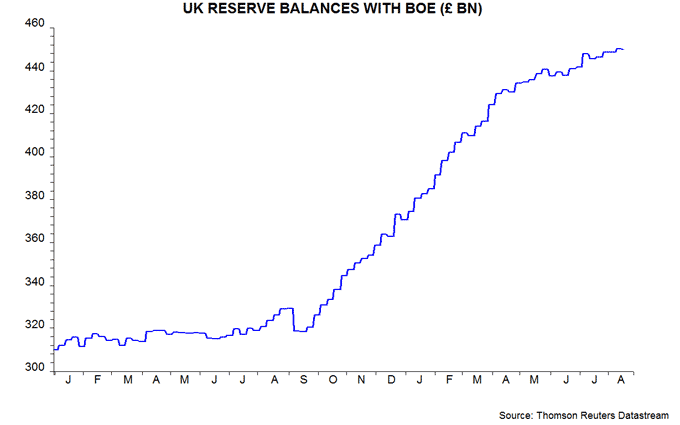The MPC used the August Inflation Report to signal that it judges the market’s view of interest rate prospects to be too dovish. The market ignored the signal. One reason may be that the MPC’s stated view is being contradicted by a continued injection of liquidity via the term funding scheme.
Launched in August 2016, the scheme allows banks to borrow cheaply from the Bank of England for up to four years. The initial terms stated that the scheme would remain open at least until end-February 2018. The MPC this month decided not to extend it beyond this date.
Borrowing under the scheme has risen further from £69.3 billion at end-June to £80.4 billion, according to a weekly tally posted on the Bank’s website.
The Bank funds the scheme by creating new bank reserves. Total reserves, therefore, have continued to expand despite gilt and corporate bond purchases ending in March and April respectively – see chart.
A Sunday Times report claimed that “the cash has been used by banks to fund the surge in credit card lending and in unsecured personal loans”. This is misleading. For banks in aggregate, borrowing under the scheme has been matched by increased reserve holdings – the cash, in effect, has flowed back to the Bank of England.
By boosting liquidity and reducing banks’ need to compete for funds, however, the scheme has put downward pressure on deposit and lending rates. Lower lending rates, in turn, are likely to have stimulated credit demand.
The Bank’s critics, therefore, are justified in complaining that it is pursuing contradictory policies, i.e. warning of future rate rises and taking steps to discourage certain forms of lending while simultaneously providing additional “stimulus” via the term funding scheme.
A key mistake was to commit to an 18-month “drawdown window” when the scheme was launched – another example of the perils of “forward guidance”.